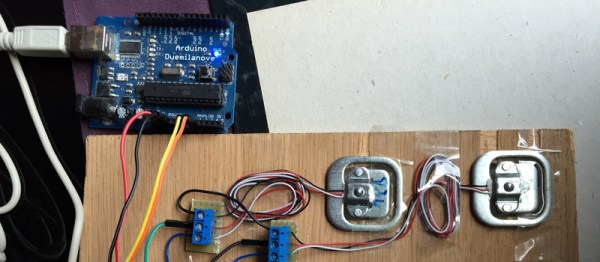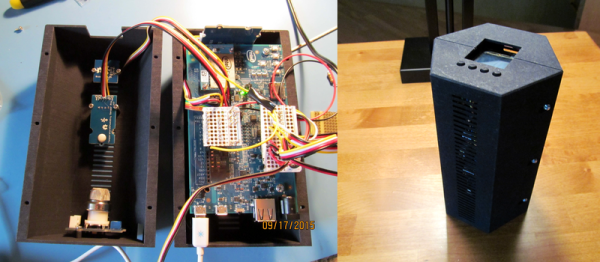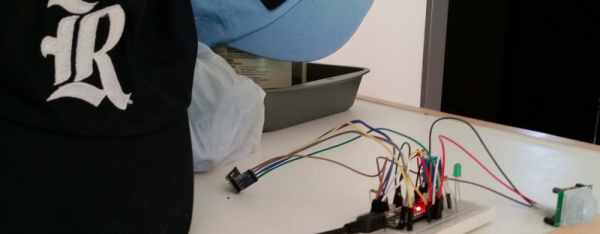Perhaps the buzziest among buzzwords when it comes to electronics is Home Automation. This is a branch of IoT where you can actually go to the home store and come out with bags filled with products. The current Hackaday Prize round challenges you to automate your life and setting your sights on the home seems like an area open to everyone. But we’re having trouble putting our finger on what exactly makes a home automated, and more importantly, the best ways to benefit those who live beside that technology. So we want to know what you think.
Do you have a great idea for what makes an automated home more than a buzz word? Perhaps you are already sold and have been building your own; tell us about it! We want to know how (and when) you think this will turn from a buzzword to something most people want running their house. We’ll round up the best from this discussion for a future post. As a thank you, we’ll select some of the best comments and send you a T-shirt from the Hackaday store.

You can go back fifty years to the cartoons of the 1960’s and see that home automation was just around the corner. The Flintstones had dinosaurs to handle the mundane, and The Jetsons had a robot maid reigning over a cadre of whimsical gadgets in the home. At that point in time the home was already moving into the automation realm with thermostatically controlled air conditioning and water heaters. This was around the same time that automatic ice makers started to appear in a home’s freezer and remote garage door openers came into use.
Beginning in the 1970’s and 80’s it became common to find a dishwasher under the counter in the kitchen. The porch light option of dusk-until-dawn sensors came into use and were followed later by motion detecting lights which used PIR sensors. Automatic lawn sprinklers started to appear in the yards surrounding the home, and security systems that monitor doors, windows, and often motion (using PIR sensors again) became a thing.
These are great examples of home automation which is often overlooked. Even smarter thermostats are all the rage today, and security system add-ons that let you monitor cameras and locks over the Internet.
Which brings us back to the question. Where is this all going? What kind of automation will be developed now in our time, and looked back in 50 years as obvious technology wanted in every home? Do we already have the automated hardware in place and just need something to stitch it all together? Let us know what you think below, and if you’re already working on your own automation project don’t forget to enter it in the Hackaday Prize.







 For instance, you can boil coffee in a pot but then you have to use some filtering technique to sequester the grounds. You can use a French press but that this hasn’t saved you much effort. So someone invented the percolator but you still must watch that you don’t burn your brew. From there we have espresso machines and drip brewers that both regulate how much water is used and at what temperature (in addition to keeping the grounds separate). And now we’re seeing single-unit machines like Nespresso and Keurig which make everything a one-step process, if you’re happy with the pods they sell you. I like to refill my own pods, which lets me choose my own grind. I’d love to see someone
For instance, you can boil coffee in a pot but then you have to use some filtering technique to sequester the grounds. You can use a French press but that this hasn’t saved you much effort. So someone invented the percolator but you still must watch that you don’t burn your brew. From there we have espresso machines and drip brewers that both regulate how much water is used and at what temperature (in addition to keeping the grounds separate). And now we’re seeing single-unit machines like Nespresso and Keurig which make everything a one-step process, if you’re happy with the pods they sell you. I like to refill my own pods, which lets me choose my own grind. I’d love to see someone 

 Lastly, ED-E, can turn things in the house on and off. This is accomplished in 100% Hackaday-approved (if not UL-approved) style with a device that appears to be a lamp cable fed into a spray painted Altoids tin.
Lastly, ED-E, can turn things in the house on and off. This is accomplished in 100% Hackaday-approved (if not UL-approved) style with a device that appears to be a lamp cable fed into a spray painted Altoids tin.











